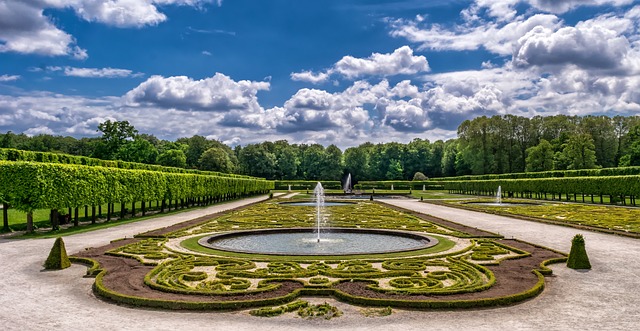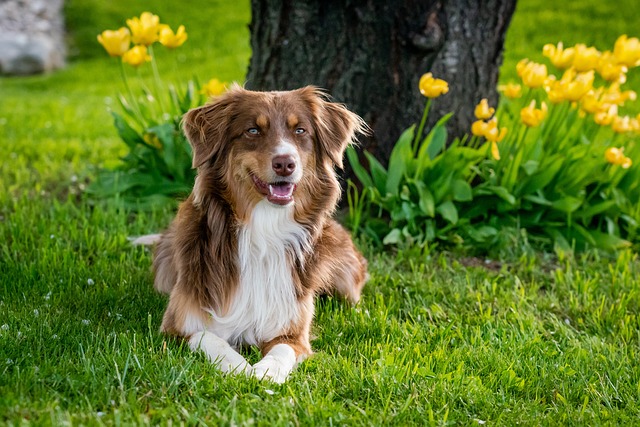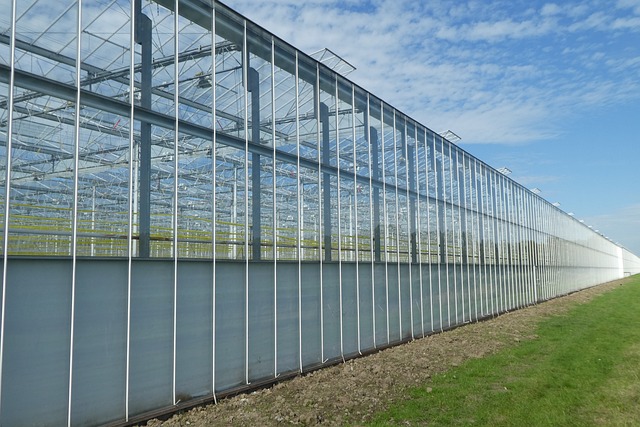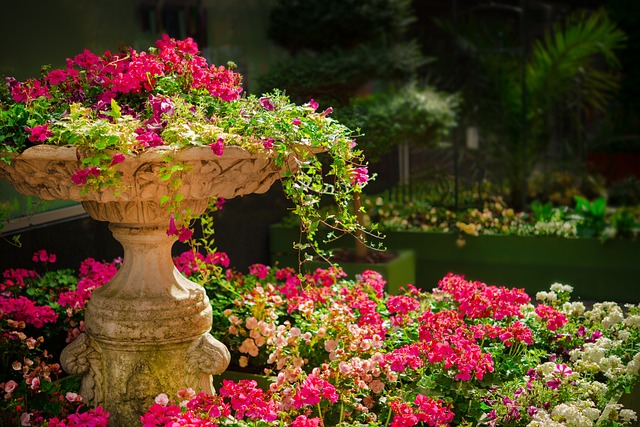Pet-friendly landscaping involves creating a safe, enjoyable outdoor space for pets by understanding their needs (e.g., running space, sun shade) and strategically incorporating features like fenced yards, play areas, and natural shade. This approach ensures peace of mind, eliminates constant supervision, and caters to both pet and owner well-being. Key design choices include non-toxic plants, secure fencing, designated play zones, and interactive toys for mental stimulation. Regular maintenance is vital for safety, aesthetics, and the overall happiness of pets in these spaces.
Creating a pet-friendly yard is essential for ensuring your furry companions can safely enjoy the outdoors. This comprehensive guide offers practical solutions for designing and maintaining a landscape that caters to your pet’s safety needs. From understanding species-specific risks to incorporating robust safety features, we cover everything from plant choices to regular upkeep. Discover how to transform your outdoor space into a secure haven where pets can play and prosper.
- Understanding Pet Safety Needs
- Designing a Safe Outdoor Space
- Choosing Pet-Friendly Plants and Flowers
- Incorporating Safety Features in Landscaping
- Maintaining Your Pet-Friendly Yard
Understanding Pet Safety Needs

Pet safety is an essential consideration in any outdoor space, and pet-friendly landscaping offers a range of practical solutions to ensure both pets and their owners can enjoy their yard to the fullest. Understanding your pet’s unique needs is crucial for creating a safe and inviting environment. For example, some pets might require ample space to run and play, while others may need shady areas to retreat during hot days. Pet-friendly landscaping takes into account these varying requirements, incorporating features like well-fenced yards, dedicated play areas, and strategically placed trees or shelters.
By integrating pet safety measures into the design, you create a functional outdoor space that caters to your pet’s natural behaviors while also offering peace of mind. This approach ensures that your yard becomes a haven for both you and your furry (or feathered) friends, fostering a harmonious relationship with nature and eliminating the need for constant supervision.
Designing a Safe Outdoor Space

Creating a pet-friendly outdoor space involves thoughtful planning and smart design choices. Start by evaluating your yard’s layout, considering areas that offer natural shade from the sun to keep pets cool during hot summer days. Incorporate various types of vegetation, including low-growing plants that are non-toxic to animals, to provide both visual appeal and a safe haven for your furry friends. Pet-friendly landscaping also means ensuring there are no sharp edges or toxic substances present in flower beds or garden features.
Consider installing fences or creating boundaries using natural elements like hedges to establish designated play areas or secure spaces where pets can retreat. This helps prevent them from wandering off and encountering potential hazards. Regularly maintained paths and designated walking trails make it easier for pets to navigate the space comfortably, promoting physical activity and mental stimulation. Incorporating interactive toys and treat-dispensing games into the landscape adds an element of fun while also encouraging mental engagement for your pets.
Choosing Pet-Friendly Plants and Flowers

When designing a pet-friendly yard, selecting the right plants is key. Opt for flowers and shrubs that are non-toxic to animals, as many common garden varieties can be harmful if ingested by pets. Researching plant safety is essential; consider consulting resources from veterinary organizations or online databases dedicated to pet toxicity. Incorporating pet-friendly flora not only adds beauty but also ensures your furry friends can safely enjoy the outdoors.
Pet-friendly landscaping goes beyond plant choices. It involves creating a garden environment that accommodates your pets’ natural behaviors, such as digging or chewing. Choose plants with sturdy stems and leaves that are less enticing to nibble on. Avoid planting fragrant flowers that might attract animals in an unpleasant way. By combining the right plants and considering your pet’s preferences, you can cultivate a lush, inviting yard where both nature lovers and their pets can thrive.
Incorporating Safety Features in Landscaping

Creating a beautiful and safe outdoor space for your pets is entirely achievable through thoughtful pet-friendly landscaping design. Start by incorporating safety features that prevent escapes and minimize hazards. For example, install secure fencing around your yard to keep pets contained while allowing them access to fresh air and outdoor exploration. Use durable materials like wood or metal to ensure the fence’s strength and longevity. Additionally, consider adding a variety of safe, non-toxic plants and flowers to enhance the aesthetic appeal without posing risks to your furry companions.
When planning pet-friendly landscaping, think about creating designated play areas with plenty of open space for exercise and stimulation. Include features like agility courses or hidden treat dispensers that encourage mental and physical activity. Moreover, incorporate water elements such as a shallow fountain or a small pond, ensuring they are securely fenced off to prevent drowning risks. By integrating these safety measures into your landscaping design, you can transform your yard into a secure and enriching environment for your pets to enjoy.
Maintaining Your Pet-Friendly Yard

Maintaining a pet-friendly yard goes beyond just ensuring your four-legged friends can play safely; it involves creating an outdoor space that attracts and nurtures them. Regularly trimming hedges and mowing the lawn not only keeps the area aesthetically pleasing but also helps control weeds and pests, which could harm your pets if they ingest them. Incorporate pet-safe plants into your landscaping to provide natural alternatives for scent marking and chewing, reducing their inclination towards destructive behaviors.
A well-maintained yard also includes regular cleaning up of droppings and any toxic substances. Pet waste can spread diseases, so prompt removal is essential. Additionally, check for and promptly repair any weak or broken fences or gates to prevent escape routes for your pets. Regular inspections ensure your pet-friendly landscaping stays secure and engaging for your furry companions.
Creating a pet-friendly landscape is not just about aesthetics; it’s about ensuring your furry friends can safely enjoy their outdoor time. By understanding your pets’ needs, designing thoughtful spaces, choosing non-toxic plants, incorporating safety features, and maintaining your yard regularly, you can transform your outdoor area into a haven for both you and your pets. Embrace these practical solutions to promote a happy, healthy, and secure environment for your beloved companions.
